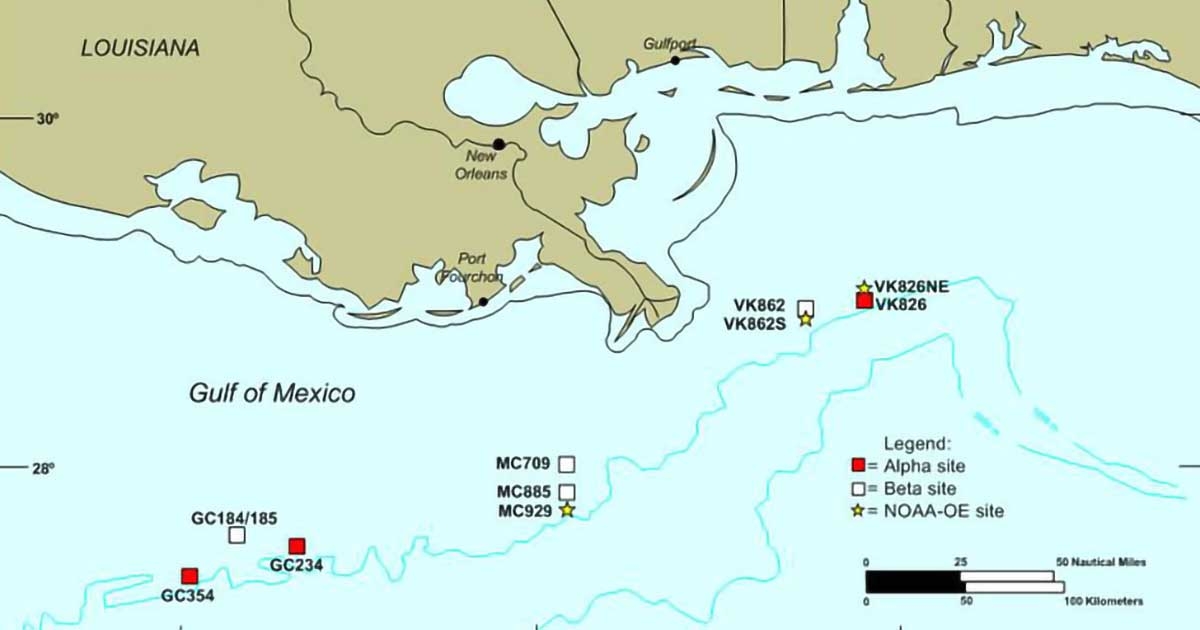The U.S. Department of the Interior, Minerals Management Service (MMS) contracted CSA Ocean Sciences Inc. (CSA) to conduct a characterization of the northern Gulf of Mexico deepwater hard bottom communities, with emphasis on Lophelia pertusa coral. Objectives of the study were threefold: 1) select study sites on the northern Gulf of Mexico continental slope consisting of hard bottom areas with nonchemosynthetic biological communities, particularly areas with dense assemblages of Lophelia; 2) design and implement submersible survey and sampling techniques to characterize the biological communities on these deepwater hard bottom areas; and 3) investigate and describe environmental conditions that correlate with the observed distribution and development of these communities.
Ten sites on the northern Gulf of Mexico continental slope were visited during the study with a submersible, the JOHNSON-SEA-LINK (JSL). Three of these sites were primary sites, four were secondary sites, and three were National Oceanic and Atmospheric Administration’s Office of Ocean Exploration (NOAA-OE) sites. Specific study elements included the following:
- Physical Oceanography – Both short-term and long-term current meter arrays were deployed at two sites to yield information about the structure of the bottom boundary layer and examine variability of local currents above the boundary layer. Modeling was conducted to simulate dispersal of coral larvae.
- Geological Characterization – Video and photographic observations were analyzed to develop a geological characterization of the sites. Sediment samples were collected and analyzed for grain size; and carbonate rock samples were collected and analyzed for carbon and oxygen isotopes.
- Biological Characterization and Studies, Part I – Video and photographic observations, including video and still photography transects and photomosaics, were analyzed to develop a biological characterization of sites. A Bushmaster sampling device was used to collect Lophelia and associated fauna. Selected specimens were analyzed for carbon, oxygen, and sulfur isotopes to aid in understanding the food web. Temperature probes were deployed within coral thickets at two sites. Near-bottom water samples were collected at selected sites and analyzed for total petroleum hydrocarbons.
- Biological Characterization and Studies, Part II – Sediment traps were deployed to estimate sediment flux. Lophelia transplantation and in-situ staining studies were conducted in the field. Laboratory studies were conducted to investigate Lophelia morphology, skeletal density, reproduction, temperature and sediment tolerances, and feeding.


